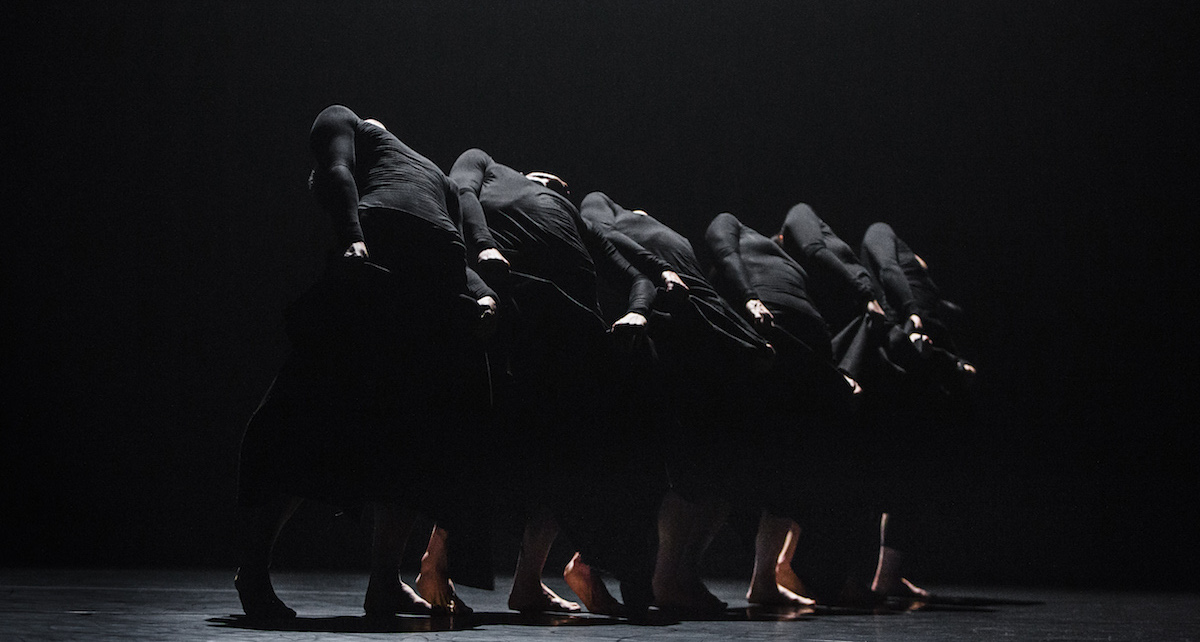On a cool winter day in Beijing, choreographer and philosopher Tao Ye is taking time out from rehearsals to tease apart the approach that has taken him and his company from China to the stages of the world. Since its inception in 2008, Tao Dance Theater has not only subverted Chinese notions of what contemporary dance can be but Western perceptions of what Chinese dance is.
Indeed, Ye’s consciously and rigorously minimal palette eschews the front-on, technical maximalism favoured by most Chinese dance companies and, by recalling the architectural style of William Forsythe, mines parallel seams of elegant abstraction and ruthless physicality.
“As dancers,” he begins, “we are labelled in many ways. We take on many identities, but when we try to communicate with the external world, we don’t determine what those labels are. That’s up to the external, the audience.”
Ye’s passion for open-ended interpretation is legendary. His works are simply numbered rather than named, and he refuses to indulge obvious narrative interpretations. “I believe in the audience,” he declares. “I believe in how they feel and what they experience. This is beyond language, so for me I try to restore that relationship, to make it visible. This is why I deliberately remove or get rid of many emotional elements that might direct the audience. Instead, I try to explore the unknown and the possible and, of course, the similarities.”

Tao Dance Theater in ‘6’. Photo by Fan Xi.
When Tao Dance Theater returns to Melbourne for the triennial AsiaTOPA festival in February, the company will perform the fast-paced 6 and the more sinewy 8. Both works utilise a “straight line” motif, with dancers maintaining a set distance between one another, and both exemplify their creator’s commitment to avoiding sentimentality, nationality and partiality.
As Ye explains, “My idea is that the language of the body is very hard to express, in normal language or in terms of culture. The audiences watching at the theatre will see that my work contains a lot of physicality to express an idea, so the reason I use the numbers is that I view all my work as a process of growing. Year after year, bit by bit; it’s a process of life growing.”
Although it is not unusual for choreographers to be obsessed with the body and its possibilities, Ye regards it through a very particular lens. “The language of the body needs to be built on a rational structure, which in turn requires a rational system,” he explains. “So my process involves a question being asked before one movement, then followed by the answer in the next movement.”
Whilst in the auditorium, we may experience his works as being haunting and emotional, this is not his direct intention. What’s more, Ye insists, “Dance involves a rational analysis by leaving out all these extra elements, like emotions and culture. The movement then becomes very pure and simple. It’s only the movement.”
Perhaps here is where Tao Dance Theater deviates most from what we are used to with Chinese dance — namely, technically exact, high gloss spectacle imbued with clearly nationalistic undertones. (In other words, an ad for Chinese exceptionalism.) By focusing on the purity of movement, Ye endeavours to eliminate the restrictions of cultural bias.
“I try to explore what our similarities are, rather than our differences,” he says. “I don’t view the world as a world of difference but rather of similarity. All our religions talk about the same thing. Concepts like the West, the East, Chinese, ethnicity; all these are labels, and when I work on my choreography I do not allow myself to be affected by or interested in these labels. They are just the product of modern consumerism, stand-ins for meaning.”
In fact, Ye goes even further on this point, refuting the idea that he is a representative or ambassador. “From my point of view, no individual can truly represent a country or a culture,” he contends. “Therefore, my work is focused on human beings, on life, through the languages of the body. We communicate with our body, so even though we all develop individual personality, that’s all in the body.”
This passionate universality, his unflinching humanity, underpins both the beauty and conceptual brilliance of his work. Doubtless this is part of the reason why Tao Dance Theater has found international success, selling out seasons in the US, UK, Europe and, of course, in its native China.
“My work explores human desire,” Ye concludes simply, “because we all have the same desires.”
Tao Dance Theatre will present ‘6’ and ‘8’ as part of Melbourne’s AsiaTOPA festival at Arts Centre Melbourne, February 22-24. For tickets and information visit Asiatopa.com.au.
By Paul Ransom of Dance Informa.

















